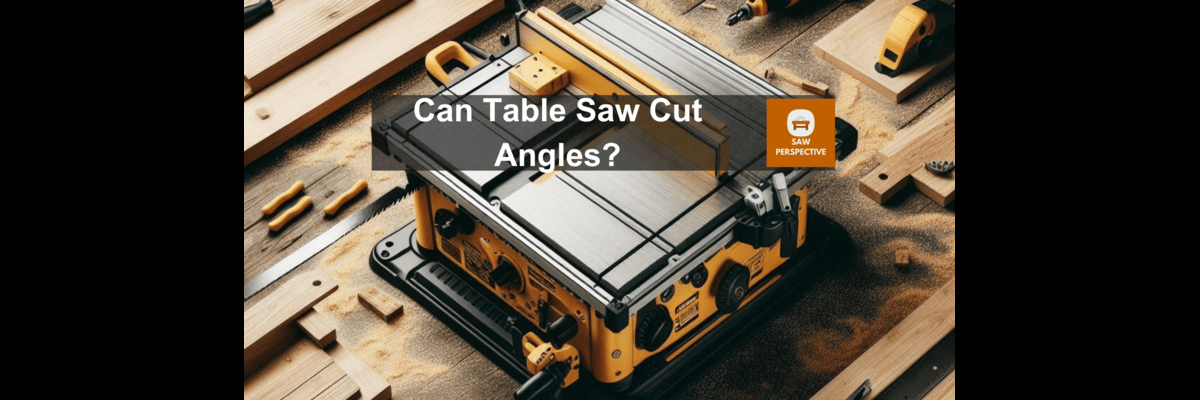Yes, most table saws can cut angles with either a tilting blade or a miter gauge. Table saws are versatile woodworking tools. It’s capable of more than straight cuts. In fact, cutting angles is a fundamental skill for many project
To use the Tilting the Blade method, adjust the angle of the saw blade itself. set the desired angle on the gauge and lock it before making your cut.
This method is ideal for making repeated cuts at the same angle and for cutting bevels. A miter gauge is a tool that attaches to the table saw’s miter slot. It allows you to set the angle of your cut. adjust the angle on the miter gauge.
Clamp your workpiece against the fence. Then guide it through the blade. This method is versatile and allows you to make any angle cut.
How To Choose A Table Saw Blade For Cutting Angles?
Angles require precision, and your blade plays a crucial role in achieving clean cuts. Here are key factors to consider:
1. Teeth per Inch (TPI):
- Higher TPI (50+ TPI) provides smoother cuts but is slower.
- Lower TPI (30-40 TPI) is faster but produces rougher cuts.
- Aim for a TPI range suitable for both ripping and crosscutting at angles.
2. Blade Material:
- Carbide-tipped blades are more durable and hold their edge longer, ideal for frequent use.
- Steel blades are less expensive but require sharpening more often.
- Choose carbide-tipped blades for best results with angle cuts.
3. Kerf Thickness:
- Thinner kerf (less material removed) reduces waste and heat buildup.
- Thicker kerf provides more structural support for the blade.
- Choose a thin kerf blade for delicate angles and precise cuts.
4. Hook Angle:
- Positive hook angles pull the wood through the cut, ideal for fast ripping.
- Negative hook angles require more force but prevent chipping on tear-out prone materials.
5. Blade Diameter:
- Larger diameter blades offer greater cutting depth and stability.
- Choose a blade diameter that matches your table saw and project requirements.
What Are Safety Precautions To Cut Angles?
1. Wear safety gear.
2. Secure the workpiece.
3. Adjust blade height.
4. Check blade tilt.
5. Use a miter gauge.
6. Maintain proper stance.
7. Avoid overreaching.
8. Switch off power.
9. Wait for the blade to stop.
10. Follow manufacturer guidelines.
What Are Common Issues For Angle Cutting With Table Saw?
Angle cutting with a table saw can be smooth when done . But, common issues may arise if the blade is not aligned. Ensure the blade is set at the correct angle according to your project requirements.
Using a reliable miter gauge and maintaining a steady feed can also help. This can contribute to precise and hassle-free angle cuts with your table saw.

